
10 minute read
chapter one
new symbols.
fig. 1.1
Advertisement
Goebbel's street: Torchlit parade in celebration of Hitler's rise to power. Unten den Linden, Berlin 30th Jan. 1933
“The Street is now the primary feature of modern politics. Whoever can conquer the street can also conquer the masses, and … thereby conquer the state.”
[13]
As the Minister of Propaganda to the Nazi party, Josef Goebbels had an understanding of what it took to gain the support of the nation. Represented by this quote, is the value he placed on urban space as a platform to perform the ideals and aspirations of German society in the time of national socialism. The city of Berlin, saw its streets transformed into a highly politicised form of mass media, activated by means of pageantry, spectacle and violence to convey the total strength of the party [fig.1.1]. [14] Nazi urban ambitions were ultimately channelled through Albert Speer’s Haupstadt Germania, a fascist world city of unrivalled grandeur. Dreamt up to entirely replace Berlin, the city was to be built over the erased streets and neighbourhoods of the historic centre. This never-to-be vision is the most extreme example of how successive regime’s in the 20th century attempted to remake Berlin’s urban identity according to their best image. Goebbel’s faith in urban space to reform society speaks of the dialectical relationship between the formation of cities and performances of citizenship. Drawing from Henri Lefebrve’s Right to the City, urban geographer, David Harvey sums up this relationship:
"what kind of city we want cannot be divorced from the question of what kind of people we want to be" [15]
This understanding has been shared throughout the lineage of city fathers; reaching pronounced heights after the divide of Berlin as East and West set about remaking themselves according to the socio-political regimes they represented. Both sides would ultimately utilise post-war reconstruction as a means to exaggerate their competing political ideologies and societal aspirations through built form. [16] The resulting street topography was of two disparate place identities representing a physical manifestation of the coldwar confrontation. In simple terms the West became an extreme microcosm of liberal capitalist order and western planning paradigms while the East came to represent the stark concrete urbanism of the Eastern Bloc and socialist monumentalism of Soviet Russia.
[STAGING]
Uniting these two identities became a key raison d’etre of the Post-Wende urban administration. Following in the footsteps of previous generations, identity was to be staged through physical and architectural intervention. A new concept however saw the post-Wende administration employing some of the most intense and concerted efforts to curate and communicate the image of a changing city to a wider population. Urban actors turned to spectacle and display as a means to focus the attention of the public, investors and tourists alike onto the future of the built environment, whilst deflecting from dwelling on past traumas. Ute Lehrer has labelled this as the ‘spectacularisation’ of building, arguing that the tactics employed in the 1990s marked a departure from construction being solely concerned with the erection of buildings. [17] Instead this process came to represent ‘the production of images between the project’s inception and completion’ used to sell the process, in this case the construction of a bright and promising future for the city. The image of the city can be manipulated by physical transformation and by means of altering the symbolic meaning associated to the place. In Post-Wende Berlin while physical transformation was taking place on an enormous scale, a celebratory campaign of public engagement was launched which most notably saw the introduction of the Schaustelle - ‘Show-Sites’ which denoted construction sites turned into tourist attractions. Arguably the culmination of these events, the summer of 1996 witnessed a cultural programme involving two hundred guided tours of construction sites as well as open-air performances taking place on the sites of future developments.The
[15]__Harvey, D. (2019). REBEL CITIES: from the right to the city to the urban revolution.
fig. 1.2
Schaustelle site at Potsdamer Platz reportedly had over 50,000 visitors a day during its peak and also hosted a number of concerts that used its half-built architectural elements to act as a backdrop for the spectacles enacted. [18]
The InfoBox [fig.1.2] was one of the most defining symbols of construction site tourism promoted by the city and investors. This bright, red exhibition centre was temporarily placed alongside remnants of the Wall on the site of the Potsdamer Platz developments from 1995 to 2000. It’s roof-top terrace enabled panoramic views of the wasteland of construction sites and cranes; while inside was a multi-media experience intended to interactively engage visitors with the future developments. What the InfoBox displays is the use the construction process to act as spectacle for the gaze of the urban flaneur. Its popularity speaks of the success of its creators in promoting mass excitement around the city’s numerous developments and the future they represented. However to its critics the InfoBox, with its slogan: ‘Visit Tomorrowland’, appeared as a crass,Disneyfied reminder of the West’s total allegiance to corporate globalisation and failure to engage sensitively with the East’s urban landscape. [19]
[Critical Reconstruction]
The Infobox 1998
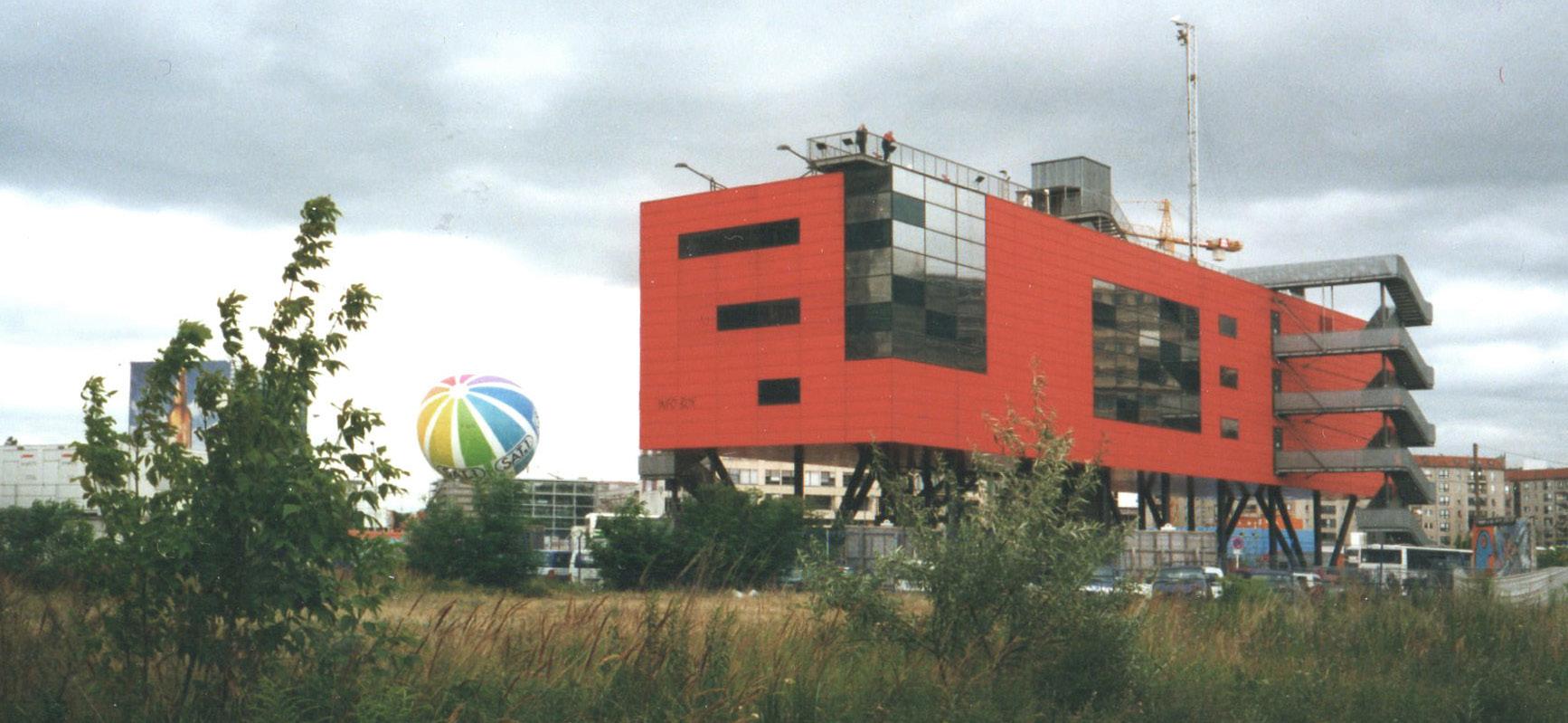
The stated desires for these spectacles was to act as a form of communicative planning, instigate interest and public debate over the transformations taking place in the city. However as opponents argued, the democratic value of these initiatives was somewhat minimal since they worked largely as a tactic to gain public support for the hegemonic visions of the city’s critical reconstruction strategy. In essence, critical reconstruction embodied the efforts to stage the entire reunified centre of Berlin through a co-ordinated manipulation of history and selective idealisation of traditional pre-WWII architectural heritage.The chief architect of critical reconstruction,
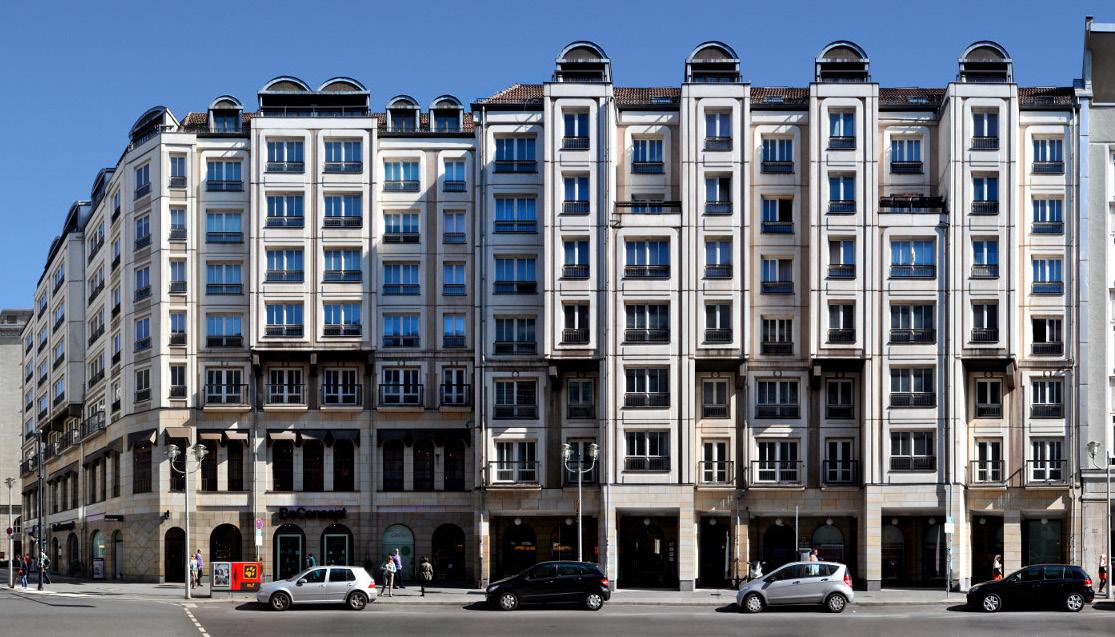
Hans Stimmann held the position of the city’s head of building from 1991 to 1996. Stimman presided over a period dominated by the nostalgic pursuit of returning to a perceived ‘golden age’ of urbanism largely formed during the Grunderzeit years of Wilhelmine Berlin (1871-1918) and the Weimar Republic years (1918 - 1933). In physical form the paradigm of critical reconstruction was set forth by a strict set of aesthetic requirements that developments throughout the 1990s had to adhere to as means to recreate the streetscapes of this romanticised époque [20] . Design parameters described in Berlin Mitte, a manual for redevelopment released by the city senate in 1994 include the replication of the centre’s old street plans wherever possible and, with that the preservation of historic frontage lines of the streets. The aspired aim of this document reveals an idealisation of the Mietskaserne or tenement typology. Additionally the mandatory use of stone as a facade material was prescribed alongside the specification of traditional window arrangements, set lot sizes and a compliance to a thirty-metre building height limit. The streets of ‘new’ Berlin thus became a highly regulated urban stage-set that employed architecture to form a fake historical impression. [21] Hans Stimman’s statement: ‘Berlin must look like Berlin’, speaks of a violence to the critically reconstructive requisite that the ‘new’ city must allude to a selective window of Berlin’s past in its effort to become globally normalised. Critical reconstruction polarised opinions of commentators during the 1990s with supporters believing it necessary to achieve a presentable German cultural identity through the built environment. The other side of opinions voiced concerns over the strategy of historical staging across the city that essentially performed an aggressive act of gentrification that omitted any mention of the East.
fig. 1.3
Critical Reconstruction: Friedrichstadt facades
fig. 1.4
[Potsdamer Platz]
It is certainly highly doubtful whether the key projects of critical reconstruction, achieved their aim of replicating the bustling streets of the golden age capital. Postsdamer Platz represents the largest and most overt of such attempts to restore the lost streetscapes of the former capital. As a major transportation hub of the 1920s, the area has played a role in many of the 20th century contests and convulsions experienced in the city. Propelled by the expansion of road and rail links, Potsdamer Platz’s ‘heyday’ in the Weimar Republic saw the interchange transformed from a peripheral zone to new urban centre that bridged both East and West. [22] Cue to 1990 and the area represents the largest void present in Berlin, originating from the combined effects of WWII aerial bombardments and the subsequently neglect and purposeful clearance of the area by the East to make way for the border wall in the 1960s.
It is within this sixty-acre site that the critical reconstructionists embark on the largest built endeavour of the 1990s [fig.1.4], to piece together pre1933 urban topographies and form a new commercial district emblematic of an aspired urban modernity. Unlike other redevelopments taking place in the centre, the architectural style employed was less directly constrained to the requirements of old world nostalgia. However, the same principles remained of seeking to glorify the vibrancy and street plans of historic urban grids. In this case, the grids of the old Berlin were adorned with the gleaming, highrise architecture of corporate transnationalism with the area becoming a
playground for global starchitects of the time. As Europe’s largest building
A skyline of cranes Potzdamer Platz - 1996
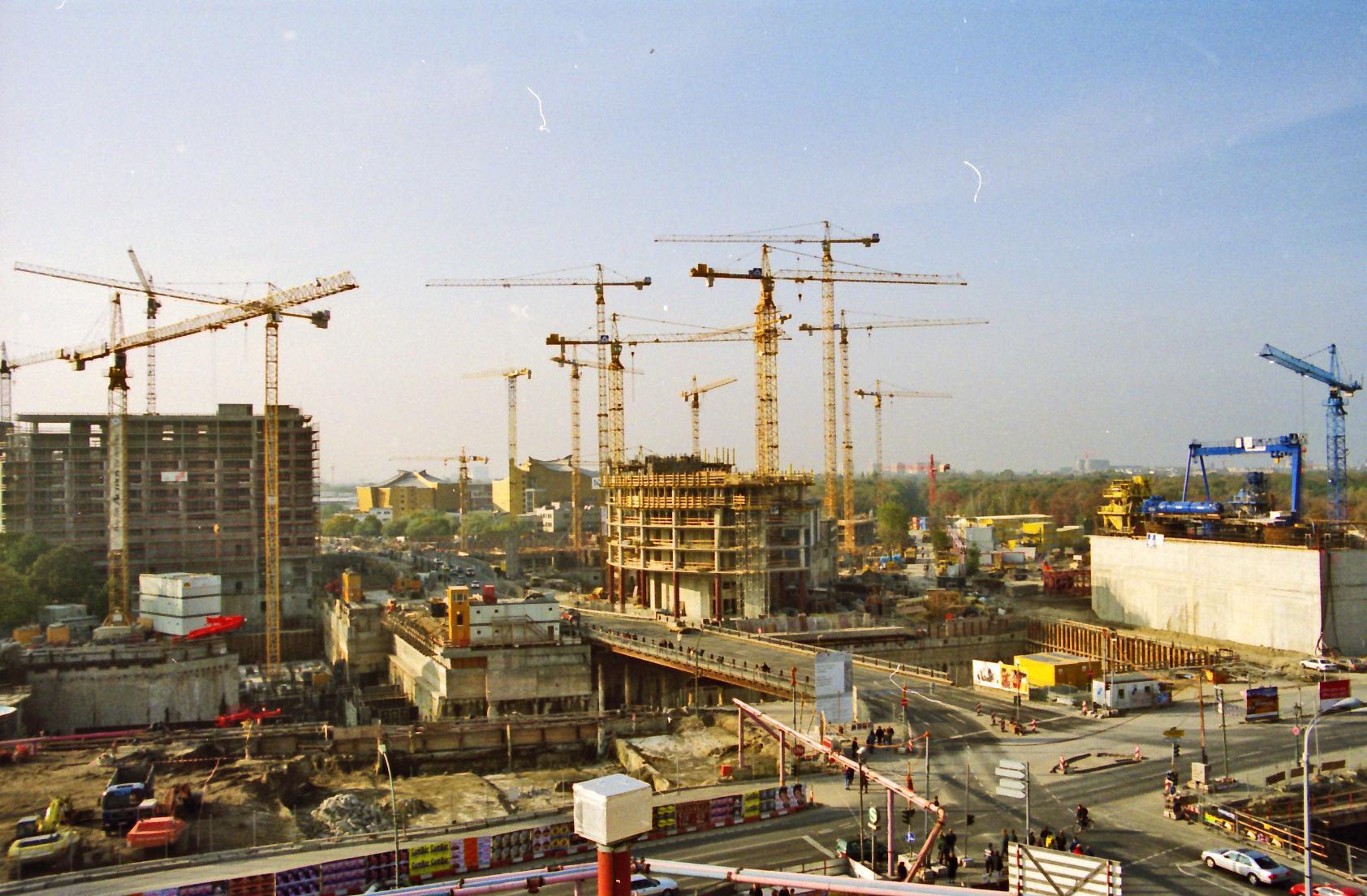
site took shape, it became clear that the project was to be dominated by the interests of just a handful of private corporate interests eager to site their brand identities in what they believed to be a burgeoning business centre; DaimlerBenz and Sony being the largest trans-nationals to move their European headquarters to the area. The dominant aesthetic of mute, westernised office architecture says much of the compromise made by a city senate eager to replace an urban heritage it perceived was lost and the visual qualities of a globalised city promoted by private investors. [23]
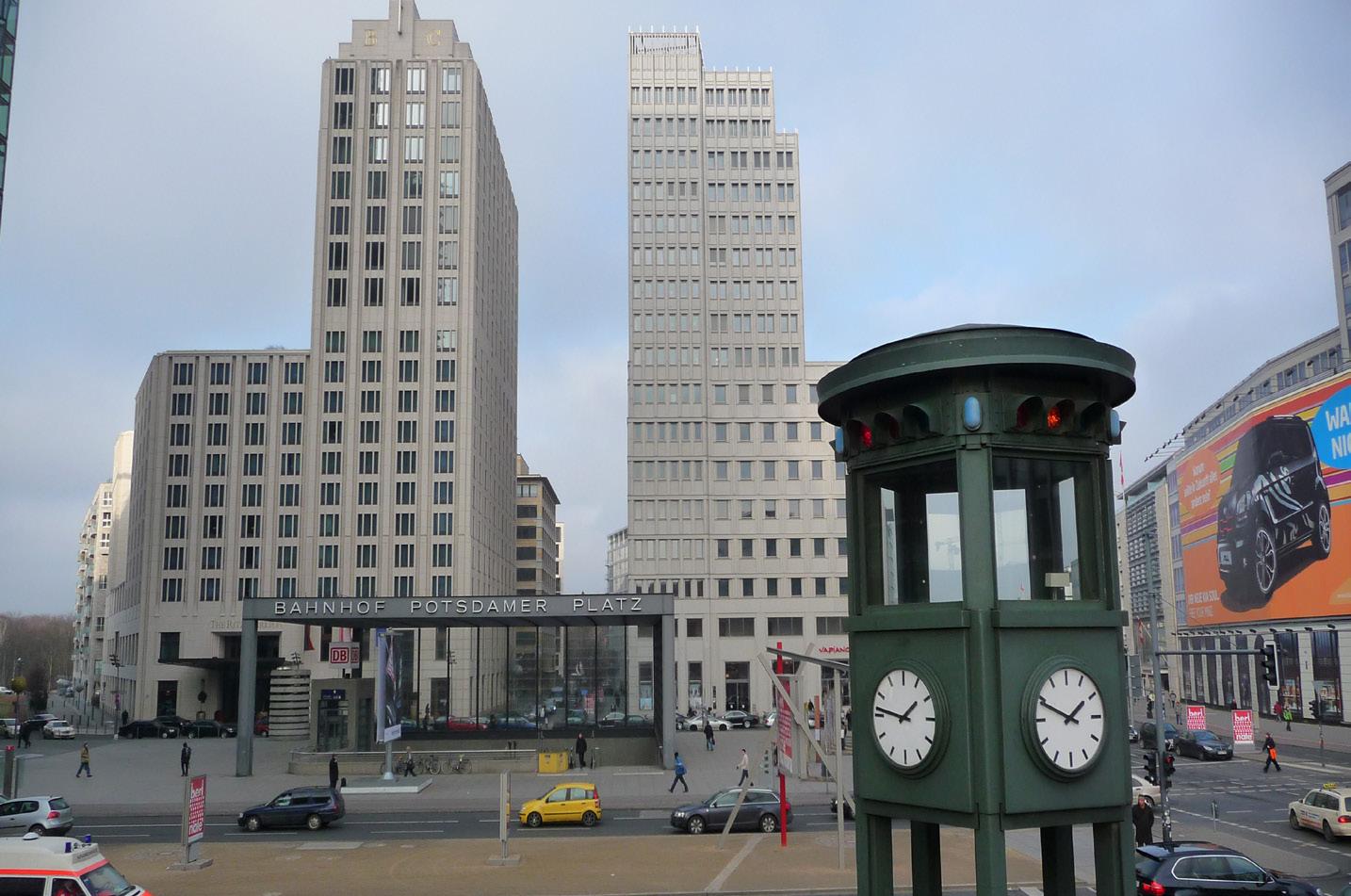
To many the resulting topography revealed upon completion of Potsdamer Platz in 2000 was emblematic of a wider americanisation of the city that was taking place throughout the Post-Wende decade. If we are to consider the renewal of Berlin’s streets as an act of staging, then Postdamer Platz represents a performance of power through visual association with capitalist ideologies. [24] The reconstruction of a 1920s traffic light in Potzdamer Platz (the first of its kind to be employed on any urban street) poignantly exhibits the use of prop to adorn its corporate streets with historical mimicry [fig.1.5]. [25] The crude manipulation of history further reveals the mis-én-scene nature of this stage set. As Andreas Huyssen notes, the attacks on the history of the DDR represent ‘the politics of wilful forgetting’ motivated by ‘a strategy of power and humiliation, a final burst of cold war ideology’. [26] What is evident is that by opting for the normalising architectures of nostalgia or banal global
[23]__Colomb, C. (2012). Staging the New Berlin : place marketing and the politics of urban reinvention post-1989. New York: Routledge.
[24]__Zukin, S. (2000). Landscapes of power: from Detroit to Disney World. Berkeley, Calif.: University Of California Press.
fig. 1.5
Replication The rebuilt 1924 traffic lights of Potzdamer Platz
fig. 1.6
Landscapes of Victory Checkpoint Charlie's Statue of Liberty
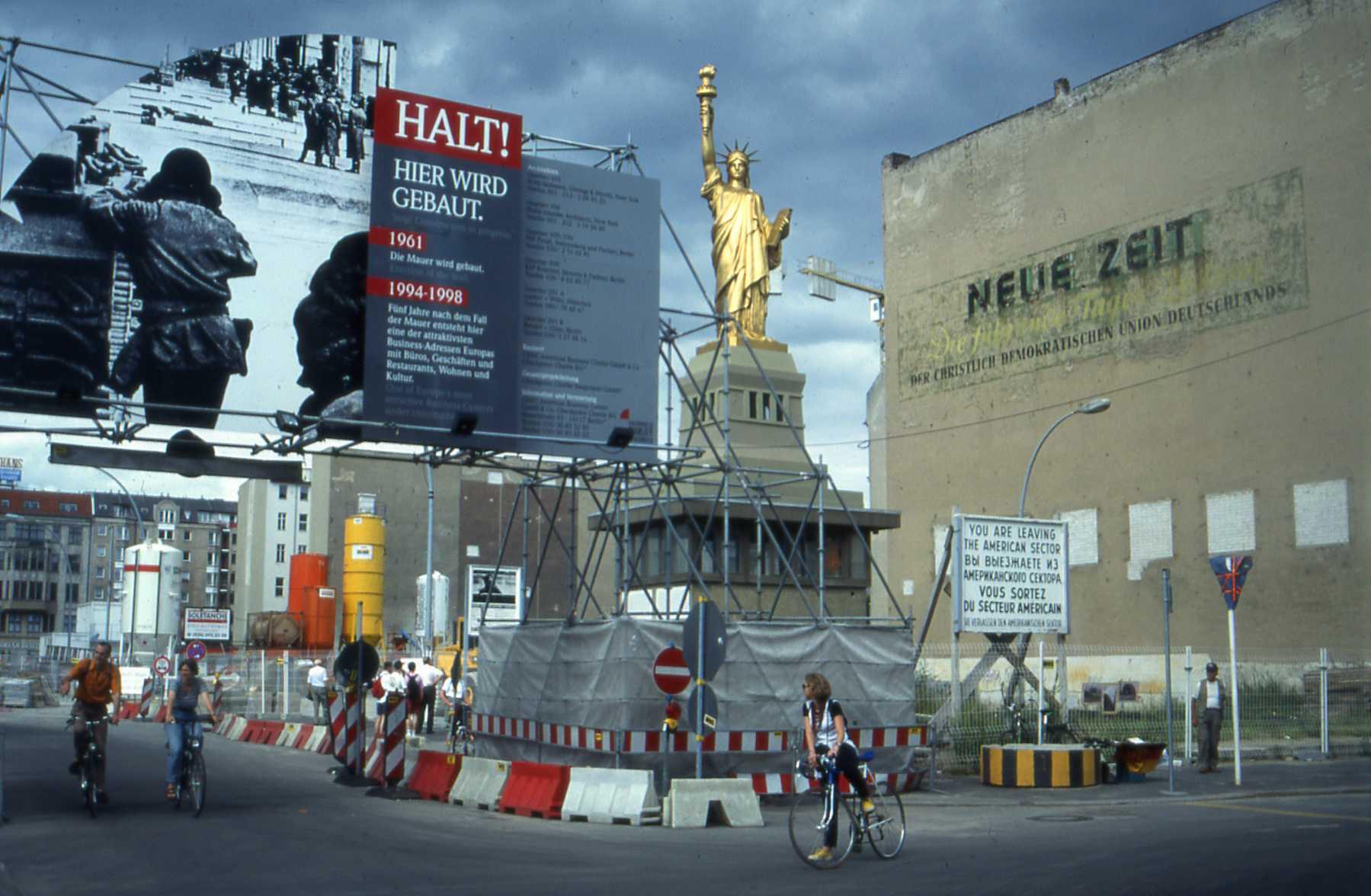
corporatism, the advocates of critical reconstruction reveal the importance they placed upon image and symbol in the new city. So far so, that some critics of the late-nineties began comparing the city to the Las Vegas strip on account of the often absurd embellishment of historical fabrication and self invention. [27] In general the symbols carried by the new streetscapes of the Post-Wende Berlin fabricated an urbanism to convey victory, in some cases more overtly than others. At Checkpoint Charlie, the border crossing that once saw Soviet and American tanks face one another down, there appeared some of the most crass examples of architectural symbolism. In 1996 - the last remaining East German watchtower became the host of a miniature, goldcoated styrofoam Statue of Liberty, installed by an American artist [fig.1.6] [28] . Meanwhile, on this same stretch a giant cut-out billboard of the architect, Philip Johnson advertised the arrival of the new American Business Center in 1998, that was to be constructed over the remnants of the border crossing. What these urban spectacles reveal in no hidden terms is the, at times kitsch breed of Disneyfication employed on Berlin’s street to suppress the legacy of the Wall.
[26]__Huyssen, A., 1997. The Voids of Berlin. Critical Inquiry, 24(1), pp.57-81
[27]__Ward, J. (2006). Las Vegas on the Spree: the Americanisation of the New Berlin. In: Visual Culture in Twentieth-century Germany: Text as Spectacle. Indiana University Press.






